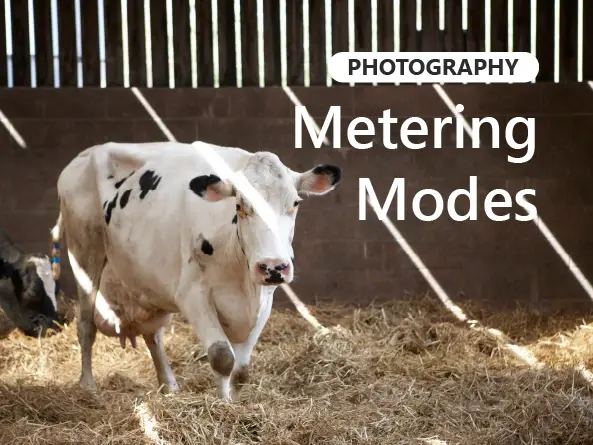Food Photography Essentials: Making Your Dishes Look Delicious
- Mar 25, 2024
- 3 min read
Updated: Mar 21
In the visually-driven world of social media, food photography has evolved far beyond mere snapshots of meals into a distinct artistic discipline. Whether you are an amateur food blogger, a culinary enthusiast, or a professional aiming to enhance your portfolio with the right skills, food photography can make your dishes appear not just edible, but enticing. This guide, chock-full of tips for taking food photos, will cover the absolute basics of how to capture the beauty and appeal of your culinary creations.
Photo by peppma on FreeImages.com
Some words about food photography
Food photography is essentially another method of storytelling. It's a way to depict the tastes, textures, and aromas of a dish through its image. Beyond just showcasing food, it involves the art of enabling the viewer to taste with their eyes. Achieving this fusion of visual appeal and sensory invitation requires a blend of technique, creativity, and an understanding of food's sensory aspects.
Photo by John Foxx on FreeImages.com
Lighting: The Foundation of Appetizing Images
Good lighting is the very base for excellent food photographs. Natural light is your best ally, offering soft, diffused light that makes dishes look appetizing. Your setup should be placed near a window where indirect sunlight comes in, avoiding direct sunlight that can create harsh shadows and highlights.

Photo by tom_kelley_archive on FreeImages.com
Understanding the importance of experimenting with different times of day is crucial to mastering food photography. The intensity and angle of natural light vary significantly throughout the day, each creating unique moods and textures in the photography. Morning light can be gentle and soft, ideal for a fresh, calm look. In contrast, the golden hour before sunset offers warm, glowing light that can add a rich, inviting tone to your images. Experimenting with these variations can dramatically affect the mood and texture of your food photography, enabling you to capture the essence of your culinary creations more effectively.
Tip: Use Reflectors and Diffusers
Enhance natural light with reflectors to bounce light back onto the food, filling in shadows and highlighting details. A diffuser, such as a sheer curtain over the window, can soften the light on overly sunny days, ensuring your food looks gentle and inviting.
Composition: Crafting the Perfect Shot
Composition involves much more than merely placing elements within the frame; it requires balancing the dish, its components, and the use of negative space to guide the viewer's eyes.
Rule of Thirds
Imagine your frame divided into nine equal parts by two horizontal and two vertical lines. Place the key elements of your dish along these lines or at their intersections to create a more engaging photo.
Photo by John Foxx on FreeImages.com
Layers and Textures
Introducing layers or textures can add depth to your shots. Vary the backgrounds and surfaces beneath your dishes, and let the food's textures contribute to the visual interest.
Angles and Perspective
The advice on experimenting with different shooting angles is crucial. The choice of angle should be influenced by the dish’s unique features and what you wish to emphasize, such as the texture, layers, or shape. Each dish has a story and a best side to tell it from—finding that angle can make all the difference in portraying the dish’s true allure.
Styling: The Secret Ingredient
Styling is where your creativity truly shines. It's all about selecting the right props, backgrounds, and garnishes that complement your food without overshadowing it.
Keep It Simple
The dishes and backgrounds should be neutrally toned so the colors of the food stand out. A few well-chosen props can add context or tell a story, but they shouldn't distract from the main subject.
Freshness Is Key
Use fresh ingredients and garnishes to ensure the food looks its best. A spritz of water can add freshness to vegetables, and a brush of oil over meats can enhance their juiciness.
Practical Tips for Food Photos
Angle and Perspective: Experiment with different shooting angles. Top-down shots are great for displaying the components of a dish, while side shots can showcase a dish's layers.
Photo by John Foxx on FreeImages.com
Pay Attention to the Details: Use a shallow depth of field (i.e., a wider aperture) to blur the background, making the most appetizing part of the dish stand out sharply.
Photo by John Foxx on FreeImages.com
Post-Processing: Enhance your food shots with adjustments in exposure, contrast, and saturation to make the colors vibrant. Keep post-processing realistic to ensure the food looks appetizing and true to life.
Food photography is an interplay between art and appetite, combining lighting, composition, and styling to make dishes leap off the screen. The essence of food photography lies not in merely showcasing a dish but in stimulating the viewer's taste and smell receptors, inspiring them to dive into the picture. Armed with these tips and your creativity, go out there and capture those amazing pictures to celebrate food.















